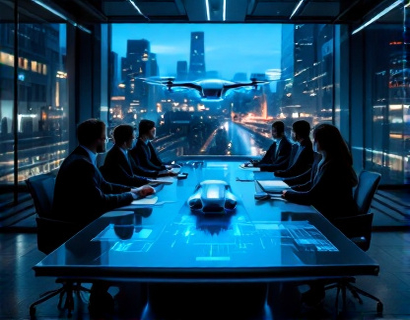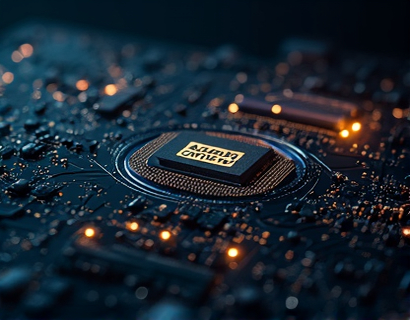Innovative Aerospace Solutions: Transforming Efficiency and Safety Through Cutting-Edge Technology
The aerospace industry stands at the forefront of technological innovation, driven by the relentless pursuit of efficiency, safety, and performance. Recent advancements in materials science, propulsion systems, and digital technologies are revolutionizing the way we design, build, and operate aircraft and spacecraft. This article delves into the latest technological breakthroughs that are reshaping the future of aerospace engineering, offering industry professionals and visionaries a forward-looking perspective on what lies ahead.
The first area of focus is the development of advanced materials. Traditional aircraft materials such as aluminum and titanium are being replaced by composite materials that offer superior strength-to-weight ratios. These composites, primarily carbon fiber reinforced polymers, not only reduce the overall weight of the aircraft but also enhance its structural integrity. The reduced weight translates directly into fuel savings, which is crucial for both commercial and military applications. Moreover, the durability and resistance to corrosion of these materials extend the lifespan of aerospace vehicles, reducing maintenance costs and downtime.
Another significant advancement is in the realm of propulsion systems. Electric and hybrid-electric propulsion technologies are gaining traction, promising to transform the efficiency and environmental impact of aviation. Electric motors are inherently more efficient than traditional jet engines, converting a higher percentage of electrical energy into mechanical energy. This efficiency is particularly beneficial for short to medium-range flights, where the payload and range requirements are more manageable. Hybrid-electric systems, which combine conventional engines with electric motors, offer a balanced approach, providing the benefits of electric propulsion while maintaining the range and power of traditional engines.
In the domain of avionics, the integration of artificial intelligence (AI) and machine learning (ML) is revolutionizing flight operations. AI-driven systems can process vast amounts of data in real-time, enabling predictive maintenance, optimized flight paths, and enhanced situational awareness. For instance, AI algorithms can analyze sensor data to detect potential mechanical failures before they occur, allowing for proactive maintenance and reducing the risk of in-flight emergencies. Additionally, ML models can optimize flight routes based on real-time weather conditions, air traffic, and other variables, leading to fuel savings and reduced travel times.
The use of autonomous systems is another transformative trend in aerospace. Unmanned Aerial Vehicles (UAVs) or drones are becoming increasingly sophisticated, with applications ranging from surveillance and reconnaissance to cargo transport and emergency response. Autonomous navigation and control systems, powered by advanced sensors and AI, enable these vehicles to operate with high precision and reliability. For manned aircraft, autonomous systems are enhancing safety by assisting pilots with tasks such as landing and takeoff, particularly in adverse weather conditions. The integration of autonomous technologies also paves the way for the development of fully autonomous aircraft, which could revolutionize air travel and logistics.
In the realm of space exploration, innovative technologies are pushing the boundaries of what is possible. Reusable rocket technologies, pioneered by companies like SpaceX, are drastically reducing the cost of access to space. By designing rockets that can land and be reused, the exponential increase in launch costs is being addressed, making space missions more feasible and frequent. This shift is opening up new opportunities for satellite deployment, scientific research, and even commercial ventures such as space tourism.
Advanced propulsion systems for spacecraft, such as ion drives and nuclear thermal propulsion, are also being developed to enable longer and more efficient space missions. Ion drives, which use electric fields to accelerate ions to high velocities, offer a highly efficient means of propulsion for deep-space travel. While they provide low thrust, their prolonged operation over extended periods results in significant velocity gains. Nuclear thermal propulsion, on the other hand, uses a nuclear reactor to heat a propellant, such as hydrogen, to extremely high temperatures, producing a powerful and efficient thrust. These technologies have the potential to reduce travel times to distant planets, making human exploration of Mars and beyond more viable.
The integration of digital twins is another key innovation in aerospace engineering. A digital twin is a virtual model of a physical system that simulates its behavior and performance under various conditions. In the aerospace industry, digital twins are used to optimize the design, manufacturing, and operation of aircraft and spacecraft. By creating a precise digital replica, engineers can test and validate designs in a virtual environment, identifying and addressing potential issues before they arise in the physical world. This approach not only accelerates the development process but also ensures higher quality and reliability.
Data analytics plays a crucial role in leveraging digital twins and other advanced technologies. The aerospace industry generates vast amounts of data from sensors, maintenance records, and operational logs. Advanced analytics tools can process this data to extract valuable insights, driving decision-making and operational efficiency. For example, predictive analytics can forecast maintenance needs based on historical data and real-time sensor inputs, minimizing downtime and extending the lifespan of components. Similarly, operational analytics can optimize flight schedules and resource allocation, leading to cost savings and improved service delivery.
The aviation industry is also witnessing significant advancements in cybersecurity. As aircraft and ground systems become increasingly connected and reliant on digital technologies, the risk of cyber threats grows. Robust cybersecurity measures are essential to protect sensitive data and ensure the safe operation of aerospace systems. This includes implementing advanced encryption, intrusion detection systems, and regular security audits. Collaboration between industry stakeholders and government agencies is crucial to develop and enforce standards that safeguard against cyber threats.
Environmental sustainability is another critical aspect of innovative aerospace solutions. The industry is under increasing pressure to reduce its carbon footprint and minimize environmental impact. Beyond the use of advanced materials and efficient propulsion systems, there is a growing focus on sustainable aviation fuels (SAFs). SAFs are derived from renewable resources such as agricultural waste and algae, and they can significantly reduce greenhouse gas emissions compared to traditional jet fuel. The adoption of SAFs, coupled with electric and hybrid-electric propulsion for shorter flights, represents a comprehensive approach to achieving sustainability in aviation.
The future of aerospace engineering is also shaped by international collaboration and regulatory frameworks. Global partnerships facilitate the sharing of knowledge and resources, accelerating the development of cutting-edge technologies. International standards and regulations ensure that innovations meet safety and performance criteria, fostering trust and adoption across the industry. Organizations like the International Civil Aviation Organization (ICAO) play a vital role in harmonizing these efforts, promoting best practices and setting benchmarks for the industry.
In conclusion, the aerospace industry is at the cusp of a transformative era, driven by innovative technologies that enhance efficiency, safety, and performance. From advanced materials and propulsion systems to AI, autonomous systems, and sustainable practices, the advancements being made today will shape the future of aviation and space exploration. As industry professionals and visionaries continue to push the boundaries of what is possible, the aerospace sector will remain a testament to human ingenuity and the relentless pursuit of excellence.










































